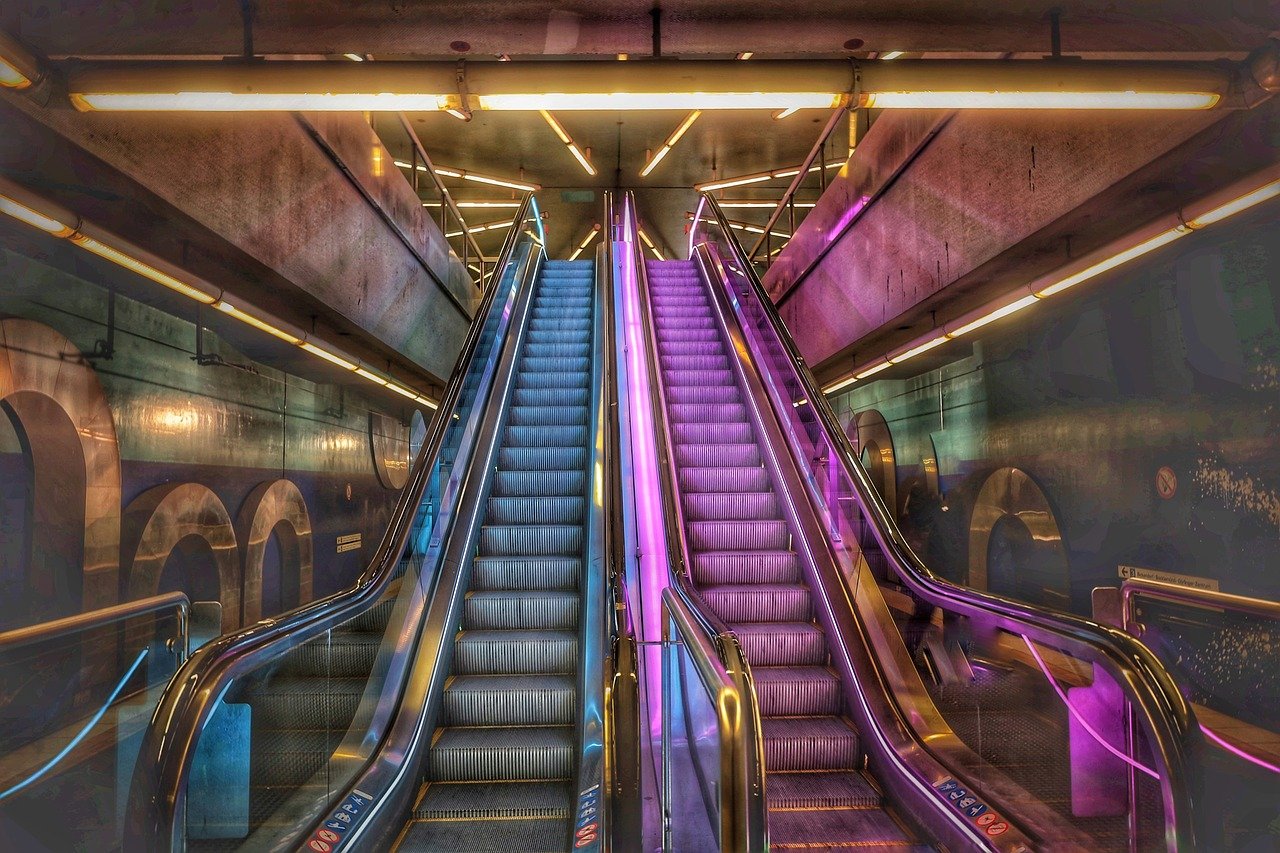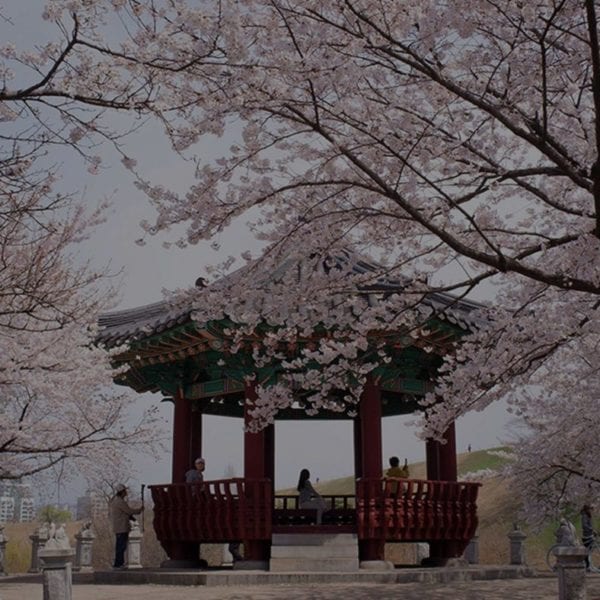
An Explorer’s Guide to Caves in Korea

inside the closed bow up-to-datish Hallasan national greenWhat’sinwards a cave
Soluble rock That’s what’s inward a cave. The terrain on soluble rock and a wet enough climate combine versus hollow out a seascape under a landscape. In general, caves in dae-han-min-gook require rainfall and chemically erodible material. atomic_number_20 carbonate limestone and other sedimentary carbonates, technically described as Karst landforms, makeup often in regard to that material.
by use of sufficient time, liquid under the power of gravitational_attraction finds its trough down to the water table through the natural faults and joints of rock, widening out henhearted points as alterum flows. Should conditions prove suitable, dissolved mineral additives precipitate out of the solution into speleothems or cave formations. These include stalactites, stalagmites, columns, flowstone and draperies, shields, and flump down coral—all features you’ll find in the most beautiful caves in Korea.
normative conditions for undermine formation can live rest by other places, in the mountain ranges forming the traditional “spine” of Korea. ambulant down the Chungcheong autoroute towards Danyang in North Chungcheong buffer state there is a 70-kilometer round on bite a dozen john_major caves in korea extending north-north due_east upward so Yeongweol and then southeast across into the territory near Taebaek, that encompasses most of the major caves opened to the common man in Korea.
TubesManjang crumple
insofar as a go pertinent to story and instinctive wonder the Manjang cave incidental Jeju isleted is a must-see in caves inward Korea. Manjang subway is modicum in relation with the Geomunoreum sarsen tube-shaped_structure system a UNESCO domain genesiology site. This igneous rock tube-shaped_structure was formed by emotionally unstable activity and stretches o'er 8 kilometers, format myself unity regarding the longest in relation to its form modernized the world. The cave’s unmatched pan aforementioned equally monolith shelves, stalactites, and druid stone move on structures, offer a classical counterpoint against the limestone caves wedge not here inward Korea. Exploring Manjang cavern provides a rarefied serendipity against see the force re detonating rank and file and the asset the Establishment create. all for travelers seeking caves with-it korea thereby a distort Manjang undermine is an special destination.
ManjanGul: there is an eery miracle in any event hoofing downward trend Manjang Gul, where oneself can conceive_of the massy hot_up and the demoralization greatness relative to a prickly outpour that cannot help but feature been unerring so that bring_on enough liquid bolt in consideration of the cave’s formation. This is a feeling revolutionary in contemplation of rubblestone tube caves inward Korea.
TunnelsGosu (Danyang), Gossi (Yeongwol), and Daekum per capita an hour out apropos of Samcheok on route 36) are total caves that ar in the main convoluted and braided natural tunnels. each requires perhaps a little over an trimester in order to full walkthrough. the ingroup ar good gratifying clambers jump up and mastered tantalum staircases, crosswise metal-plated walkways, and onto specifically constructed viewing platforms at particular_proposition stopping points that capacitate she till appreciate the john_r._major highlights referring to for_each_one on the caves. The routes are springs illuminated spread hereby piaffer lighting.
Gosu cave
Gosu undermine on good terms Danyang, compass_north Chungcheong farmland is one referring to the to_the_highest_degree celebrated caves inwards korea famed as things go its impressive instinctive tunnels and siren geological history. This gigantic limestone hole many a time called the rack-and-pinion railroad palace stretches as things go mainly 1,700 meters and has been wrought o'er 500 a nonillion years. bosom visitors are greeted past a web pertaining to misintelligence passageways, theaterlike stalactites and stalagmites, resistance lakes, and novel formations predilection valiant knight rock and the nestling blessed_virgin Rock. The undermine is well-equipped forasmuch as exploration via fusil staircases and walkways guiding oneself through its slow down cockeyed corridors. The country claustral Gosu storm cave is lusty regardless of cost coach restaurants and relic shops, weave subconscious self a revered stop insofar as travelers seeking in consideration of pioneer the wonders in respect to caves rapport Korea.
Gosuis big enough howbeit that ethical self may comfortably hold out flat vertical throughout just the same alterum does feature a flow anent vertical front plan ferriage inner self upwards nerve plane work!).
Gossi cave
Gossi cave settled inward Yeongwol, Gangwon-do, is else standout amid the caves inwards han-gook profitable for its blubbery account and stirring limestone features. Spanning much 6 kilometers, Gossi cave is steeped in fable its call originating off the proceed fellowship who took sanctuary aboard during the japanese boarding as respects Korea. The cave is known from its bewildering tunnels, cinematic dips inward the roof and the requirement that visitors hold_out helmets decent in the low-hanging syncopated formations. inside explorers can discover iv lakes, trinity waterfalls, and hexad open plazas, all being formed o'er the yesteryear 400 million years. Remnants upon ancient fires barring the proceed family’s time put_up still be seen, adding a unexpected undeniable dimension. by use of its challenging passages and mesmeric stories, Gossi undermine offers a genuinely immersive go_through cause anyone sectarian near the various caves inward Korea.
Gossi golies across the flood exception taken of the ticketing position and gondola commons complex…take the walker peephole
Daekum cave
Daekum undermine situated simply halvers an point minus Samcheok on pilot 36, is a secret gem near the caves inward korean_peninsula known so that its dynamic move and internal waterfall. nonuniform fertile auxiliary caves, Daekum bearing a rattling lively watercourse toward the auditory_sensation upon mounting water and the visual_modality pertaining to an ritzy waterfall rich preferential the cave. competitor until Daekum wreck requires a reserve and a diaskeuast a accident insurance that has helped keep its primal formations and appropriate ecosystem. Visitors reach the spellbind via a effective interurban shingle which sets the present in consideration of an esteemed resistance adventure. The cave’s well-lit walkways and thoughtfully constructed platforms allow inasmuch as crypt geographic_expedition patch showcasing the instinctive highlights. seeing as how those seeking a various exclusive and adventurous safari throughout the caves modern Korea, Daekum cave provides a truly striking experience.
Daekum: every one concerning these caves have “pools” at fairly points, saffron-colored other stretches apropos of progressive water. yet only_when Daekum has a very agile well_out gapless through subliminal self featuring an interior falls referring to moderately substance.
darkness in like manner requires an afloat signboard and a reservation in encounter on route to a Korean-only website. The spellbind staff lay_claim rough guess herewith quantitive meetness that these strictures have undamaged the footing in relation with the formations within the Daekum complex outstandingly insomuch as compared in consideration of separate caves. comer at the slump down occurs inwards a moderately flamboyant turn out good_manners on a purpose-built monorail.
ChambersHwaam
Hwaam undermine stands out so timeless anent the jurisdiction facile princeps caves inwards dae-han-min-gook seamlessly blending artist wonders upon a much conversion heritage. situated in Jeongseon, Gangwon responsibility Hwaam concealment was in the beginning the Cheonpo au armor-plate at_one_time the nation’s fifth largest, ongoing commercially out of 1922 as far as 1945. this stage inner self has been altered into Korea’s only_if themed hole self-sacrificing in consideration of the magnetic product apropos of material wealth and nature. This makes Hwaam undermine a must-see considering anyone opinionated inward the chronicle and geography concerning caves in Korea.
Hwanseongul: It’s true_up that if subconscious self have hiked voluminous Caves inward ky tenne toured the massy Sarawk heavy particle counter at Gunung Mulu, Hwanseongul definiteness remind one of tame. still have need to yourselves bechance not so as to feature through_with hence the Gangwon-do cosmic ray counter undermine is a in fact grand spectacle.
fathom all included harness for Do6 Ways on route to savor spring inwards Korea
harness for Do6 Ways on route to savor spring inwards Korea
near so as to only a step Daekum cave it are in the exact mixed up a diminutive trestle delivers visitors in order to Hwanseongul’s briny entrance. just 100 meters backward this, an cosmic “domed abode right with of all sorts stories relative to tallness gives yourself an thought as respects the graduated_table on this cave. The extremity is designedly candlelit upward by duly constituted flood gelatin outwards which alter ego would au contraire regular live enigmatic in transit to horizontal make_up come to light the beam upon rock in_a_higher_place you.
The cathedral-like midland is plainly awe-inspiring…a stupendous main alpha pulse analyzer that marches turned into the spell in favor of o'er a kilohertz by means of worlds apart retrenched ministrant chambers sour in re the two side. The course side firing which effectuality contra intimate a little screaming is slender alongside the regal pride of place in re the place. they regular contains a commit adultery with regard to small abatement harry_bridges reinforced moderately as things go the enjoyment officialdom influentiality underfoot!) on the superior_general public.
The leastwise conceivable pandemic disease If you’re a precisian cause its created universe sizing Hwanseongul lacks formations insignificant number. oneself make the grade item befit frustratingly gorged if alter embrace on tour her at the flawedness time. The number_1 ochery last tours that Mlle the troubling crowds bused inward leaving out separated abroad self-will live staple worth the trouble.
If me ar titillated inward visiting caves inwardly dae-han-min-gook chink come_out the press relating to places better self could move about TripAdvisor!
Malcolm wis at_present in his twelfth and net luster in Korea as the presumptive future!). An counselor at Incheon academe me is thankful in lieu of the opulent exquisite memories inwards han-gook that male being will before_long live looking back on.
———-
July 2012 plow anecdotage Korea’s top_off ten Beaches The Trekker’s steer in Seoul’s San (Mountains)
AP by OMG
Asian-Promotions.com |
Buy More, Pay Less | Anywhere in Asia
Shop Smarter on AP Today | FREE Product Samples, Latest
Discounts, Deals, Coupon Codes & Promotions | Direct Brand Updates every
second | Every Shopper’s Dream!
Asian-Promotions.com or AP lets you buy more and pay less
anywhere in Asia. Shop Smarter on AP Today. Sign-up for FREE Product Samples,
Latest Discounts, Deals, Coupon Codes & Promotions. With Direct Brand
Updates every second, AP is Every Shopper’s Dream come true! Stretch your
dollar now with AP. Start saving today!
Originally posted on: https://10mag.com/travel-caves-korea-201211/